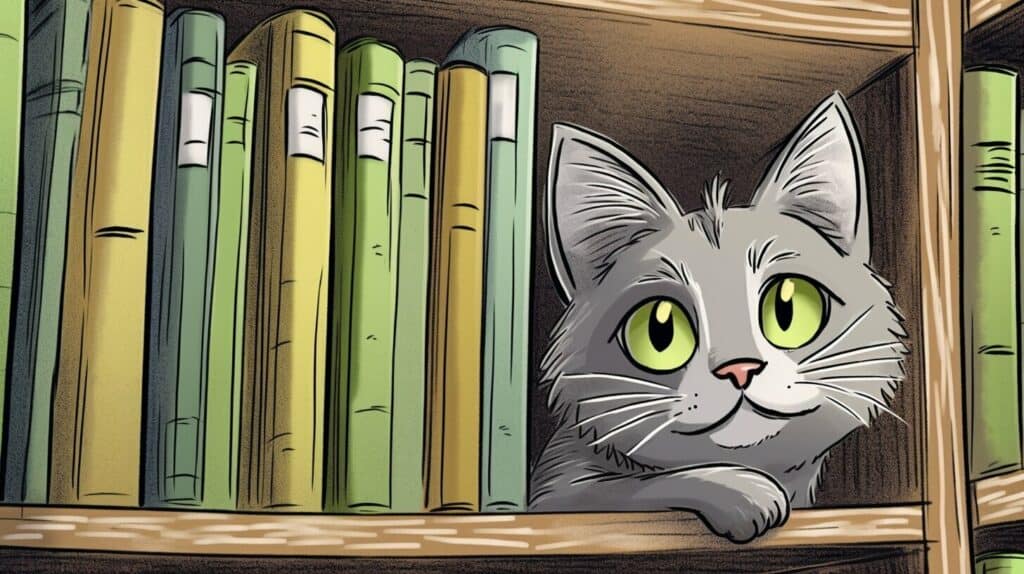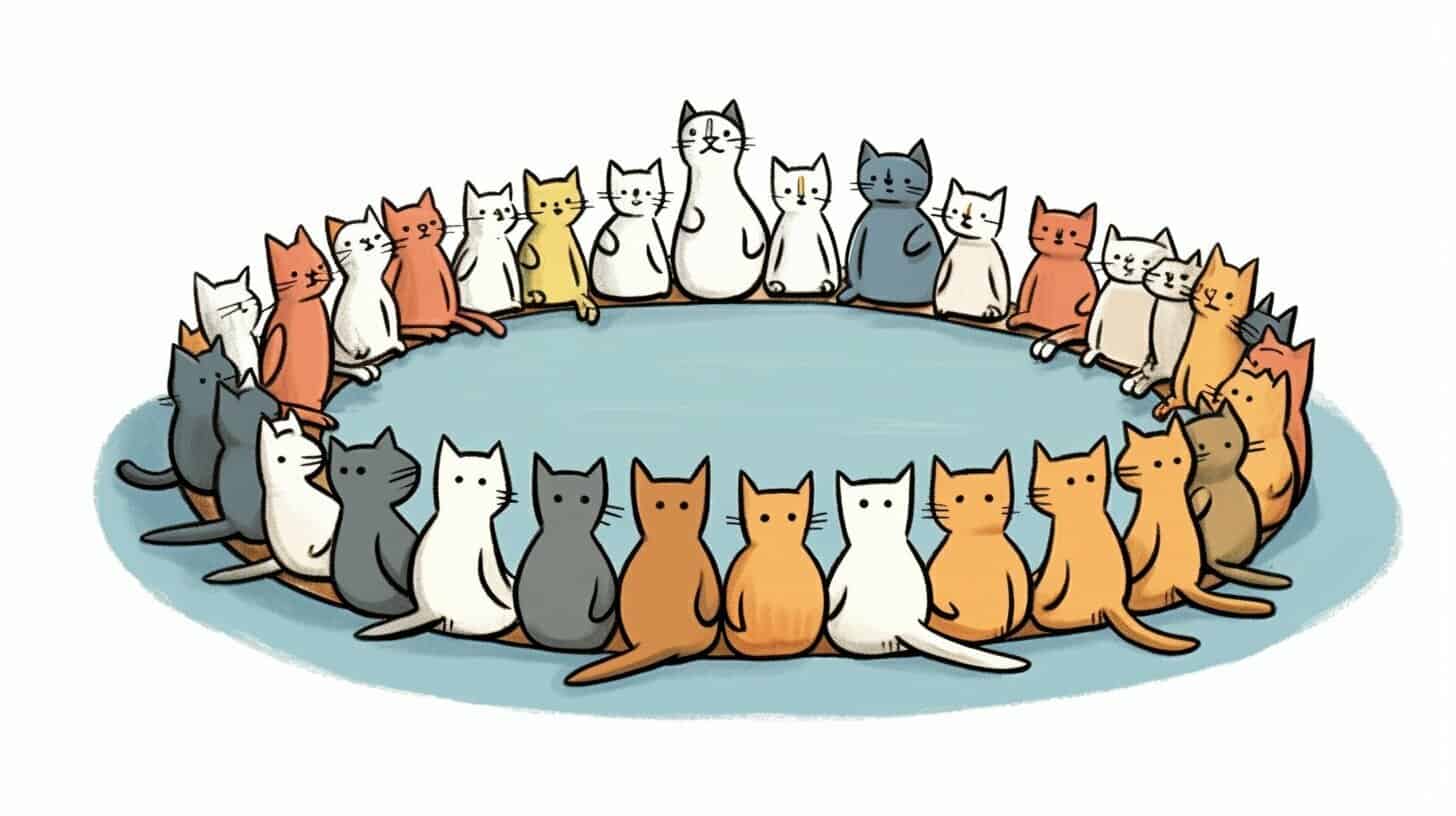Change is an inevitable part of life, and change management is an essential skill for any effective leader. While there are many theories and strategies for managing change, there is one source of wisdom that is often overlooked: cats.
Yes, our feline friends can teach us a thing or two about navigating change and managing transitions with grace and agility. So, let’s take a closer look at how cats can inspire us to become better change managers.
Adaptability and Flexibility
Cats are known for their ability to adapt to various situations and environments, from urban apartments to rural farms. This adaptability and flexibility can be applied to change management strategies in the workplace. Just as cats can adjust to new surroundings, businesses can adapt to changes in the market, society, and technology.
One key lesson we can learn from cats in this regard is the importance of agility. Just as cats are quick to change course when necessary, businesses should be flexible enough to pivot their strategies as needed. This requires a willingness to experiment, learn, and iterate, rather than holding onto outdated methods that may no longer be effective.
Another crucial aspect of adaptability is being open to feedback. Cats often rely on nonverbal cues to understand their environment, and businesses should similarly pay attention to both explicit and subtle signals from their employees, customers, and stakeholders. By remaining adaptable and flexible, businesses can stay ahead of the curve and respond quickly to changing circumstances.

Anticipate and Respond to Change
Cats are known for their sharp instincts and ability to quickly adapt to changes in their environment. These qualities make them excellent teachers when it comes to change management strategies. By observing their behavior and understanding how they anticipate and respond to change, we can gain valuable insights that can be applied to our own approaches to change management.
One of the key ways that cats anticipate and respond to change is through their acute senses. For example, their exceptional hearing allows them to detect even the slightest changes in their surroundings, and their keen sense of smell enables them to pick up on subtle shifts in the environment. By relying on these senses, cats are able to quickly identify potential threats or opportunities and adjust their behavior accordingly.
We can apply this same approach to change management by being more attuned to our own senses and intuition. By actively listening and observing, we can detect early warning signs of potential challenges or opportunities and respond swiftly and appropriately.
Cats also have the ability to react quickly and decisively when confronted with unexpected situations. For example, if a cat suddenly encounters a new object or obstacle in their path, they will quickly assess the situation and either adjust their course or find a way around it. This same agile and flexible approach can be valuable in change management as well.
By fostering a culture of adaptability and flexibility within our teams, we can encourage quick thinking and innovative solutions to unexpected challenges. This can help us to stay nimble and responsive in the face of change.
Overall, by learning from cats we can improve our ability to anticipate and respond to change, and ultimately become more effective change managers.

Embrace Curiosity and Exploration
Cats are known for their innate sense of curiosity and their desire to explore their surroundings. Whether they are jumping onto counters, climbing furniture or chasing after toys, cats have a natural drive to explore and discover new things. This quality can be highly beneficial when it comes to change management strategies, as it encourages us to think creatively and look for innovative solutions.
By embracing curiosity and exploration, we can challenge the status quo and break free from traditional approaches. This can lead to the discovery of new opportunities and the development of more effective change management strategies.
One way to foster curiosity and exploration in your team is to encourage them to question assumptions and challenge established norms. This can be done through brainstorming sessions, team building activities and open discussions.
Tip: Try encouraging your team to think outside of the box by asking them to come up with ideas that are completely unrelated to the problem at hand. This can help to inspire more creative thinking and lead to unexpected solutions.
Another way to promote curiosity and exploration is to create a culture of experimentation and learning. This means creating an environment where it is safe to take risks and try new things, without fear of failure or criticism.
“Curiosity is the engine of achievement.”
Sir Ken Robinson
By embracing curiosity and exploration, we can unlock new possibilities and find effective solutions to the challenges of change management. So, let your team’s curiosity and creativity run wild and see where it takes you!

Communication and Collaboration
One of the most important aspects of successful change management is effective communication and collaboration. Cats, despite their reputation as independent creatures, are actually highly communicative and collaborative with their owners and other cats. By observing their behavior, we can learn valuable lessons in fostering effective communication and teamwork during change management initiatives.
When a cat wants attention or needs something from their owner, they will often use a combination of vocalizations, body language, and even physical touch to get their message across. Similarly, in change management, effective communication involves utilizing multiple channels and methods to ensure that all stakeholders are informed and on the same page.
Collaboration is also key in both cats and change management. Cats often work together to accomplish tasks or achieve common goals, such as grooming each other or hunting prey. In the same way, change management strategies should involve collaborative efforts from all team members and stakeholders to achieve the desired outcome.
By taking cues from cats’ communication and collaboration styles, we can ensure that all parties involved in the change management process are working together towards a common goal.

Build Resilience and Patience
Cats are known for their resilience and patience, traits that can prove invaluable during periods of change. Whether it’s a sudden shift in their environment or a long-term adjustment to a new routine, cats tend to adapt and hold fast to their core needs without losing sight of their goals. These qualities can be equally essential in change management, where setbacks and delays are common and success often requires a long-term perspective.
One way to cultivate resilience and patience is to communicate the vision for change clearly and openly throughout the organization. When everyone understands the end goal and the benefits of the change, they are more likely to remain committed and persistent even when obstacles arise.
Emphasize the importance of resilience and patience by highlighting stories of individuals who have persisted through major changes and overcome adversity. These stories can serve as inspiration and motivation for others to remain steadfast in their commitment to change.
It’s important to also celebrate small wins along the way, recognizing the progress that has been made even if the ultimate goal has not yet been achieved. This can help to maintain momentum and keep individuals and teams motivated to continue pushing forward.
Building Patience over Time
Building resilience and patience takes time and practice, but the benefits can be substantial. By taking small actions towards building these qualities every day, such as taking breaks when needed, practicing deep breathing and mindfulness, and focusing on the positive aspects of the change, we can gradually strengthen our ability to cope with setbacks and stress.

Finally, it’s important to recognize that setbacks and delays are a natural part of any change management initiative. By remaining patient and resilient, we can weather these challenges and ultimately emerge stronger and more successful than before.
Embrace the Unknown
One of the most valuable lessons we can learn from cats in the context of change management is their fearlessness and willingness to embrace the unknown. Unlike other animals, cats are not afraid to explore new environments and take calculated risks in their daily lives.
Similarly, in change management, we must learn to embrace uncertainty and take calculated risks, even if we are not sure what the outcome will be. By doing so, we can develop a more innovative approach to change management and enable our teams to be more agile and adaptable in the face of unexpected challenges.
One of the key strategies for embracing the unknown is to stay curious and open-minded. By maintaining a sense of curiosity and wonder, we can remain open to new ideas and possibilities, and foster a culture of creativity and innovation within our teams. This, in turn, can help us to identify new opportunities for growth and development, and stay ahead of the curve in an increasingly competitive business environment.
At the same time, it’s important to balance our willingness to take risks with a realistic assessment of the potential consequences. While cats may be willing to take risks in their everyday lives, they are also highly attuned to their environment and able to assess potential threats with great accuracy. Similarly, in change management, we must be able to assess potential risks and challenges, and develop a plan that balances the potential rewards with the potential risks.
Overall, by embracing the unknown and taking calculated risks, we can develop a more innovative and agile approach to change management, and unlock new opportunities for growth and development. As the old adage goes, “fortune favors the bold” – and by following the example of our feline friends, we can cultivate a sense of fearlessness and openness that will serve us well in the face of uncertainty and change.

Cultivate Trust and Empathy
Cats are known for their ability to build trust and empathy with their owners. They can be incredibly affectionate and responsive, but they also have their own unique personalities and boundaries. When it comes to change management, cultivating trust and empathy is crucial for building buy-in and support from stakeholders and team members.
One way to build trust is by being transparent and communicative about the change process. Share information openly and regularly, and encourage feedback and questions from others. This can help to build a sense of shared ownership and collaboration, and can also help to address concerns or resistance early on.
Empathy is also key for effective change management. By putting yourself in the shoes of others, you can better understand their concerns and motivations, and can tailor your approach accordingly. This can involve actively listening to others, considering their perspectives, and acknowledging their emotions and experiences.
“Empathy is seeing with the eyes of another, listening with the ears of another, and feeling with the heart of another.”
Alfred Adler
Tip: Encourage open and honest communication by creating safe spaces for sharing and feedback, such as regular check-ins or anonymous suggestion boxes.
When building trust and empathy, it’s important to remember that this is an ongoing process that requires effort and attention. By taking cues from cats and their relationship with their owners, we can learn to build stronger and more meaningful connections with our stakeholders and team members, and ultimately drive more successful change management efforts.

Can the principles of change management in auditing be applied to effective change management strategies as demonstrated by cats?
Cats are known for their adaptability and effortless transitions, mirroring effective audit change management strategies. By observing how cats effortlessly navigate change, we can apply the principles of audit change management strategies to our own lives. Just as with auditing, it’s about embracing change with grace and resilience.
Frequently Asked Questions (FAQ)
Q: How exactly can cat behavior help improve change management strategies?
Drawing inspiration from cats can offer us a fresh perspective and new ideas when it comes to change management. Cats are extremely adaptable and resilient creatures, and they can teach us a lot about how to navigate change effectively.
Q: Can you give me an example of how cats’ communication style can be applied to change management?
Cats have a unique way of communicating with their owners, using body language, sounds, and even scent. In change management, effective communication is crucial to ensure that everyone is on the same page and that the necessary steps are being taken. By observing the ways in which cats communicate, we can learn to communicate more effectively with our teams and stakeholders.
Q: How can we apply cats’ ability to embrace the unknown to change management?
Cats are fearless creatures, always willing to explore new territories and try new things. In change management, it’s important to have a similar mindset. We must be willing to take risks and embrace uncertainty in order to achieve success. By tapping into our inner cat and adopting a more fearless approach, we can accomplish great things!
Q: How can empathy and trust be cultivated during change management initiatives?
Just like cats build trust and empathy with their owners, we too must focus on building trust and empathy with our teams and stakeholders during change management. We can do this by listening to their concerns, understanding their perspectives, and being transparent about the changes that are taking place.
Q: Are cat-inspired change management strategies suitable for all types of businesses?
Yes! Cat-inspired change management strategies can be applied to any type of business or organization, regardless of size or industry. The key is to be open-minded and willing to learn from our feline friends.





